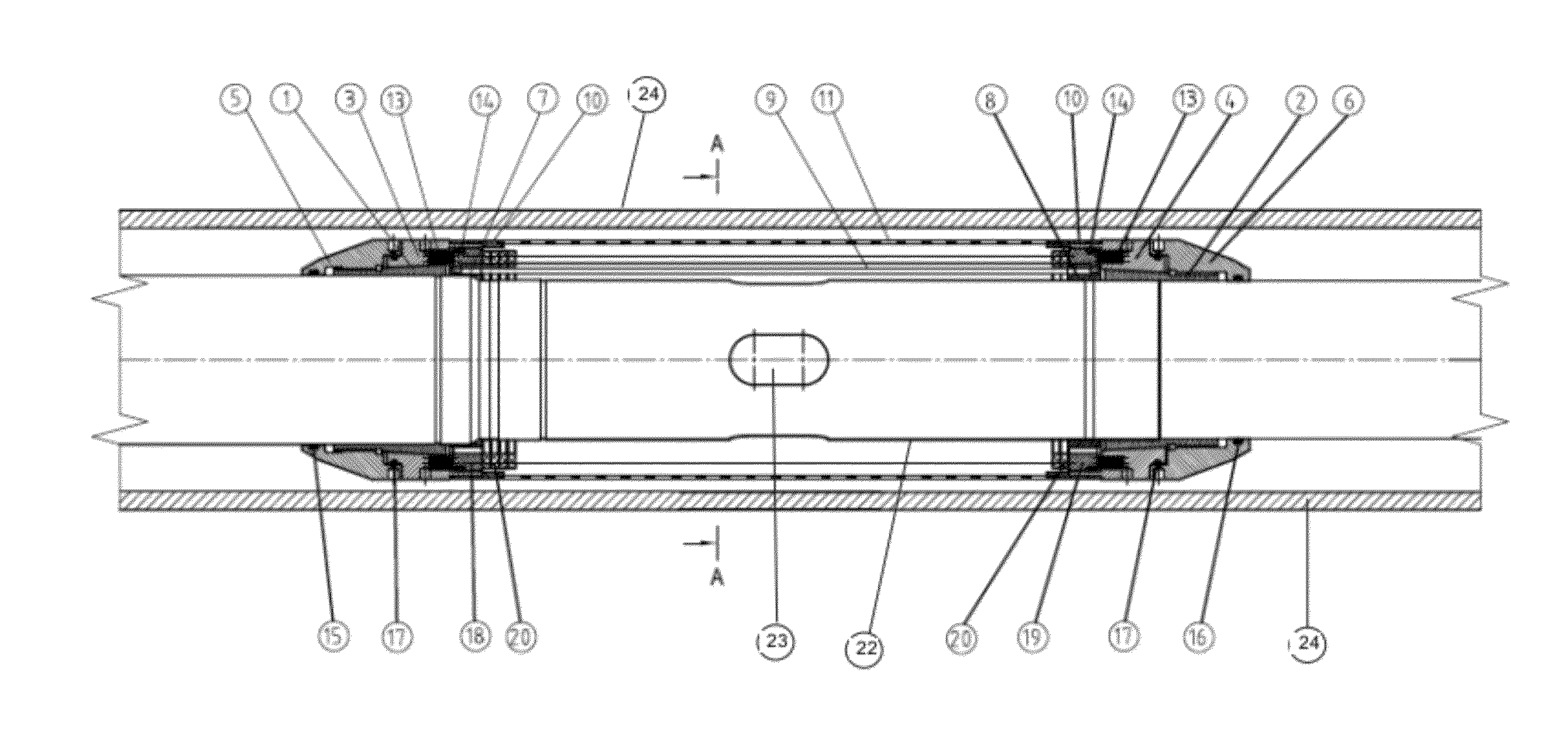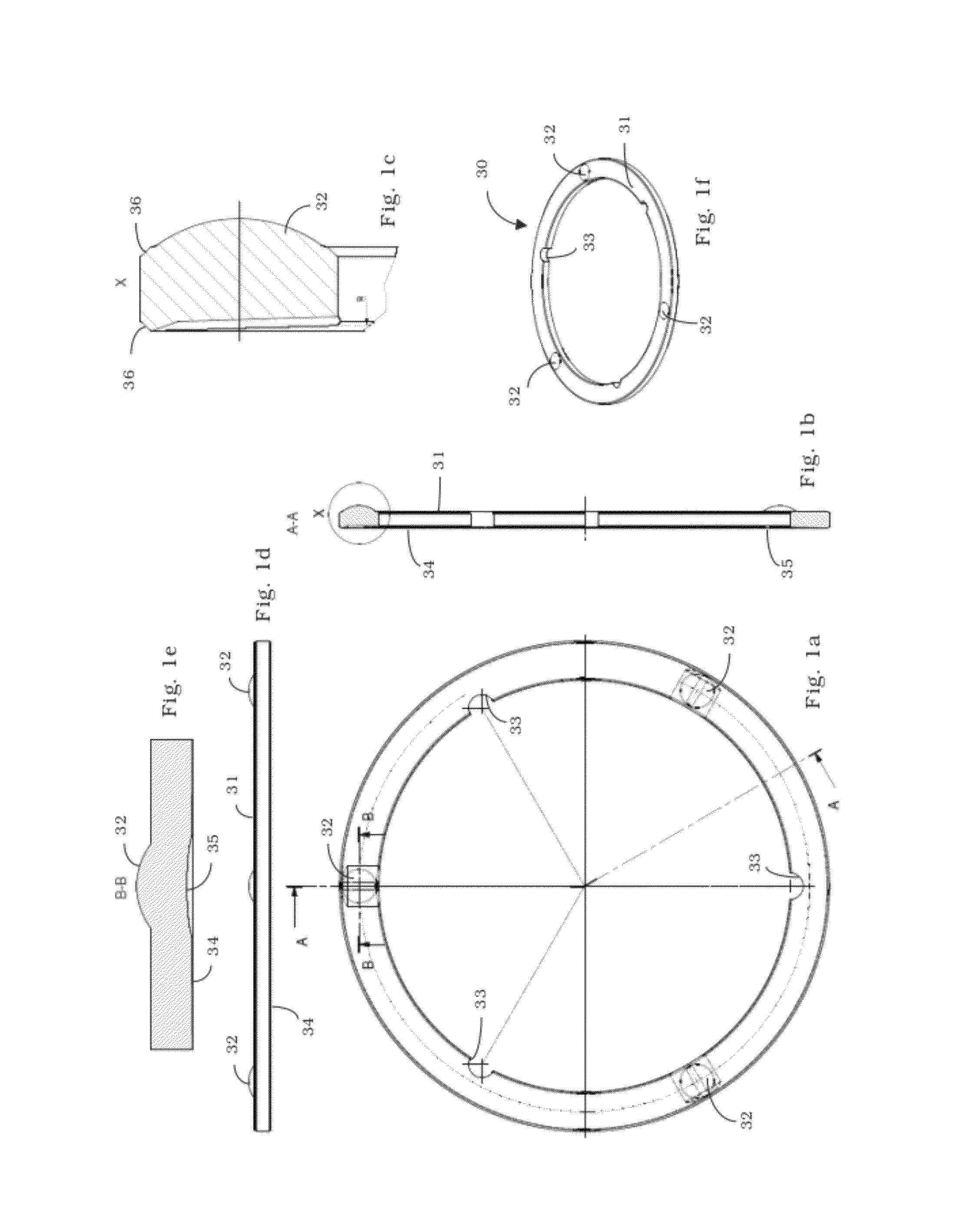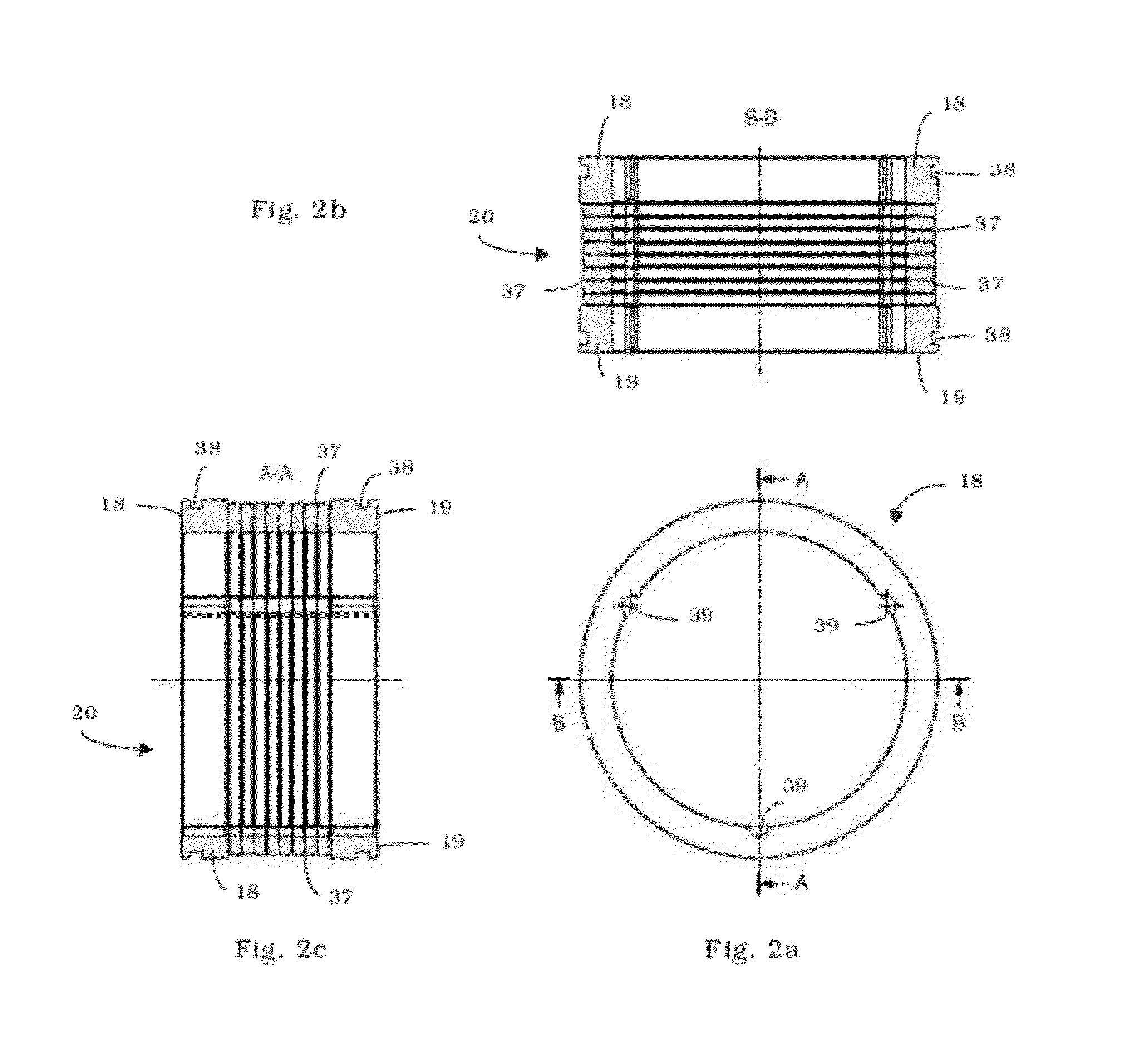Separating device for tubular flow-through devices
a flow-through device and separation device technology, applied in the direction of separation process, filtration separation, borehole/well accessories, etc., can solve the problems of low wear resistance, filter damage, extraction pipe damage, etc., and achieve the effect of improving wear or abrasion resistance and erosion resistance and reducing the tendency to fractur
- Summary
- Abstract
- Description
- Claims
- Application Information
AI Technical Summary
Benefits of technology
Problems solved by technology
Method used
Image
Examples
example 1
Resistance to Erosion
[0110]To determine the erosive wear, plates (about 75×75×15 mm) of coarse-grained, sintered silicon carbide ceramic (SSiC) of the type EKasic® C (ESK Ceramics GmbH & Co. KG) and of fine-grained, sintered silicon carbide ceramic (SSiC) of the type EKasic® F (ESK Ceramics GmbH & Co. KG) were subjected to a sand blasting test. A steel specimen served as a reference.
[0111]The tests were carried out by means of a sand blasting installation. Four different supporting materials that are typically used in offshore drilling operations served as blasting media: (1) 100 Mesh Frac Sand, (2) 16 / 20 Mesh Frac Sand, (3) 20 / 40 Mesh Frac Sand and (4) 20 / 40 Mesh Frac Sand High Strength. The blasting pressure was 2 bar and the blasting duration 2 hours, the jet being applied almost in the form of a point at an angle of 90° to the surface. The depth and width of the blasting impression characterize the erosive wear (see Table 1). The tests show that the sintered silicon carbide cera...
example 2
Resistance to Corrosion
[0113]Bars (about 3×4×25 mm) of coarse-grained silicon carbide ceramic of the type EKasic® C and of fine-grained silicon carbide ceramic of the type EKasic® F were subjected to a corrosion test.
[0114]Three bars of each type were immersed in the liquid to be investigated at 80° C. in a closable, heatable container for 14 days. Serving as liquids in this case were two different acid mixtures that are typically used in offshore drilling operations: (1) H2SO4, 70% and (2) HCl 12% / HF 2%. Following exposure, the changes in mass were determined to characterize the corrosive wear.
[0115]The tests show that the sintered silicon carbide ceramics have excellent corrosion resistance. Both EKasic® C and EKasic® F showed no measurable or detectable wear when exposed to HCl and H2SO4.
[0116]
TABLE 2Results of the corrosion testsCorrosionExampleMaterialmediumLoss in mass %2.1EKasic ® F / CH2SO4, 70%not(SSiC)measurable2.2EKasic ® F / CHCl 12% / HFnot(SSiC)3%measurable
example 3
Flow-Through Test
[0117]A separating device was produced from a ceramic annular stack and subjected to a flow-through performance test in order to determine the pressure loss at different through-flow rates.
Rings
[0118]The annular disks have an outside diameter of 130 mm and an inside diameter of 109 mm. The ring height is optionally 3, 5 and 8 mm. The lower side is concavely curved, the radius of curvature is 2000 mm. The upper side is uncurved and planar with three spacers in the form of spherical caps with a radius R=25 mm. The gap height at the outside diameter is 0.25 or 0.45 mm. The annular disks are produced from silicon carbide.
Test Apparatus
[0119]The test apparatus comprises an inner pipe, a stack of annular disks and an outer covering.
[0120]The inner pipe has a diameter of 101 mm and a length of 300 mm. In the middle of the lateral surface there are four openings (23 in FIG. 3), which are offset by 90° and through which the extracted medium can flow into the inner pipe. The ...
PUM
| Property | Measurement | Unit |
|---|---|---|
| radial wall thickness | aaaaa | aaaaa |
| thickness | aaaaa | aaaaa |
| height | aaaaa | aaaaa |
Abstract
Description
Claims
Application Information
 Login to View More
Login to View More - R&D
- Intellectual Property
- Life Sciences
- Materials
- Tech Scout
- Unparalleled Data Quality
- Higher Quality Content
- 60% Fewer Hallucinations
Browse by: Latest US Patents, China's latest patents, Technical Efficacy Thesaurus, Application Domain, Technology Topic, Popular Technical Reports.
© 2025 PatSnap. All rights reserved.Legal|Privacy policy|Modern Slavery Act Transparency Statement|Sitemap|About US| Contact US: help@patsnap.com



